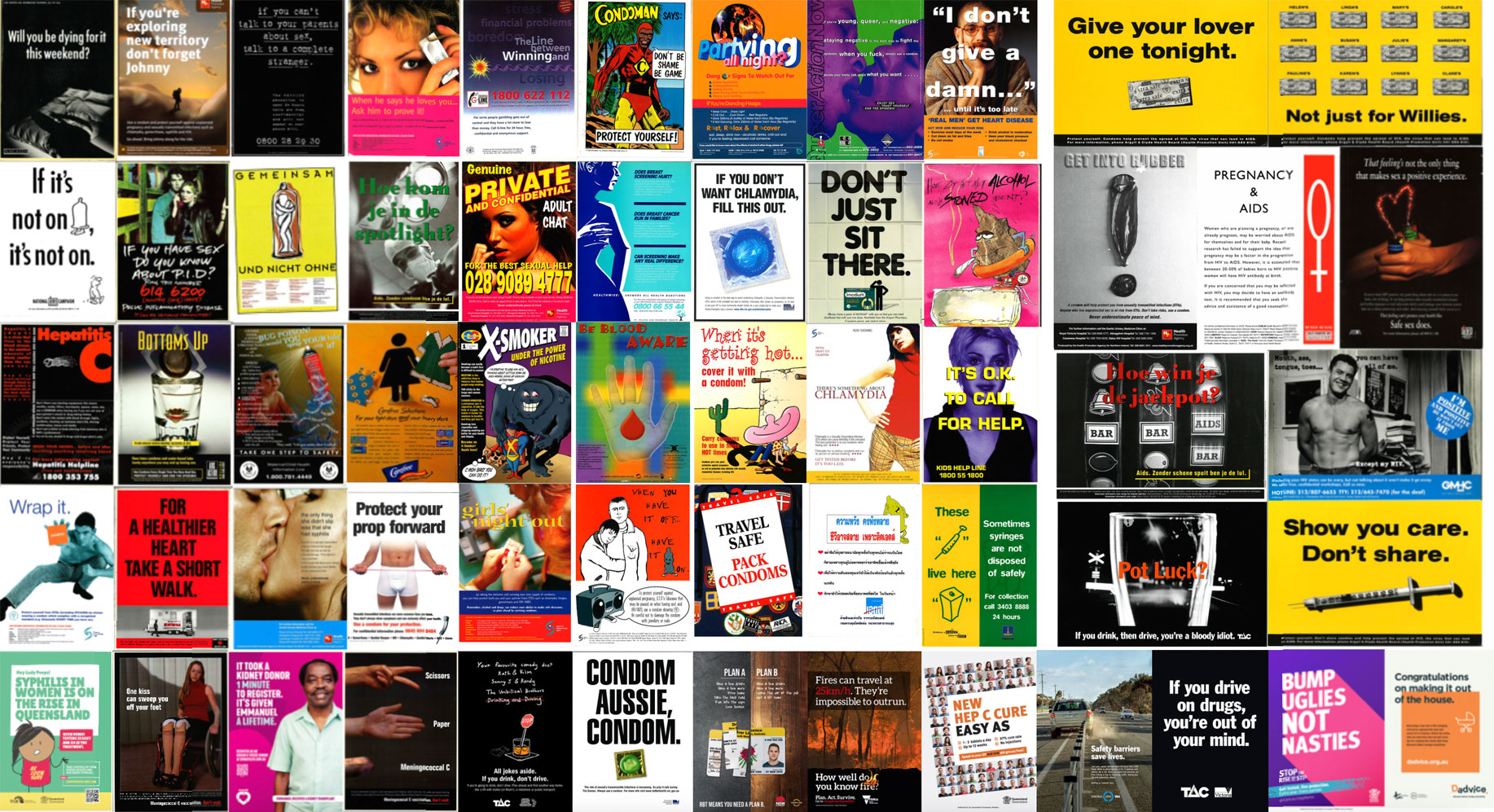The Australian advertising co. saving lives across the globe for 40 years
IT WAS AN AUSTRALIAN company that pioneered bathroom/toilet/convenience advertising around the world 40 years ago – and has continually developed its system to help save lives ever since.
Within the unique personal spaces of public bathrooms, Convenience Advertising has cleverly and sensitively brought vital public health information to people of all walks of life across the world, especially through critical health periods such as the HIV/AIDS crisis, waves of sexually transmitted diseases (STDs), community drug problems and, most recently, COVID-19.
The Convenience Advertising method of tailoring messages with illustrative clarity – and sometimes humour – has proved time-and-time- again to drive spikes in calls to advertised health services that can – and do – help people to get the treatment they need.
Since 1984, Convenience Advertising has delivered billions of messages and more than 5,000 campaigns across 14 countries.
With a focus on high impact public health campaigns, the bathroom messages have saved countless lives, from Australia all the way to the US, the UK, Ireland, the Netherlands, Russia, China, Thailand and Laos PDR. 
Getting messages on target during crises
In 1984, the HIV (human immunodeficiency virus) epidemic was spreading globally, with people who contracted the deadly virus facing huge stigma.
Public health advocate David Stanley, who was deeply involved in the international public health response to HIV, established Convenience Advertising to reach audiences at risk with lifesaving, preventive HIV messages. He remains an active director to this day.
“I had the idea of putting messages into bathrooms, in venues that could be considered a locus of risk, such as bars, clubs and pubs,” Mr Stanley said. “We trialled our first HIV campaign in Melbourne, and the results were astounding, with 13,000 calls to the HIV info helpline in the first two weeks alone.
“This told us the channel was very effective, that targeted out-of-home public health messaging worked. So, we took the idea national.
“Independent research commissioned by the Commonwealth Government in 1989, into the effectiveness of bathroom advertising, found the HIV campaigns delivered an average unprompted audience recall rate of 84 percent, with high reported usefulness, relevance and messages understood.
“With these results, we then took bathroom advertising to 13 other countries,” Mr Stanley said.
Innovating the message by location
Convenience Advertising has since delivered thousands of international and Australian public health campaigns, from safe injecting in international hotspots, to the world’s first responsible service of cannabis program in the Netherlands (including 600 coffee shops) which received national media attention.
Then there came the HIV prevention focus in Thailand – which included free condoms for international visitors. Convenience Advertising also developed the now globally famous Australian First Nations HIV campaign, ‘Condoman’.
“It’s been a blessing to work with our partners, and most importantly, the affected communities, to deliver messages that we know have changed, and even saved lives,” Mr Stanley said. “The ability to narrowcast, to take messages directly to the target audience, at the locus of risk has been extremely effective.
“We’re able to reach people in a private space, with minimal distractions, where they have at least two minutes to understand and engage with the message, whether it be to visit a website, take a multilingual information card, and nowadays scan a QR code.
“This remains a powerful way to reach specific at-risk audiences,” he said.
Technology brings the message (out of) home
The last 40 years has seen huge innovation and change in the media landscape, through the way advertisers not only reach and engage with audiences, but how they track the level of engagement.
Convenience Advertising has harnessed this change, with the use of digital screens, QR codes and new and innovative technology, and remains one of Australia’s most effective out- of-home advertising channels.
“The value of bathroom advertising has increased over time, and will continue to do so,” Mr Stanley said.
“The smartphone, coupled with artificial intelligence (AI) and machine learning, it’s a whole new dawn for prevention. The future of bathroom advertising is full of exciting possibilities.
“We’ve worked really hard to improve public health for 40 years, and we’ll continue to do so for as long as humans have the biological need to visit the bathroom,” Mr Stanley said.
Convenience Advertising now partners with more than 3,200 venues Australia-wide – including shopping centres, parent rooms, airports, universities and TAFEs, pubs, bars, and clubs.
The agency also works with all levels of government, and commercial and not-for-profit organisations across the country to deliver high impact awareness, behaviour change and product marketing campaigns.
EDITOR’S NOTE
ANYONE founding a company, who wants innovation to be part of its DNA, should study David Stanley’s story and the trajectory of Convenience Advertising. Business Acumen editor Mike Sullivan’s long-form interview with David Stanley – replete with his hard-earned insightful observations and anecdotes of hard-won success – will be published on September 16.
ends

 How to resolve AdBlock issue?
How to resolve AdBlock issue?